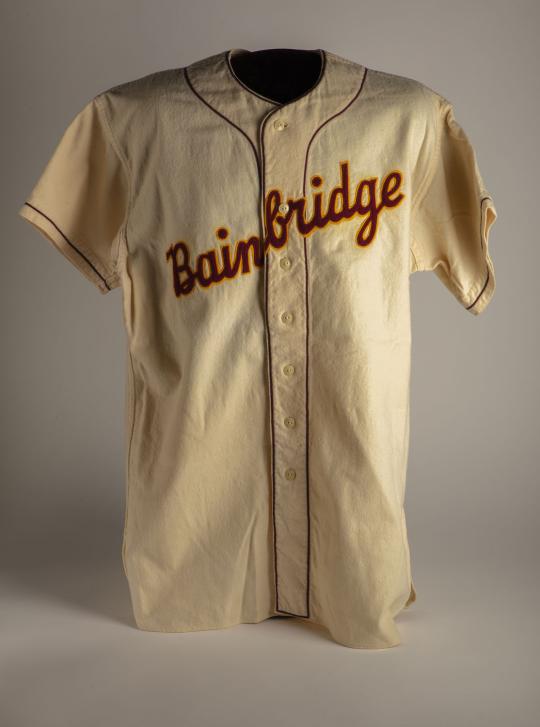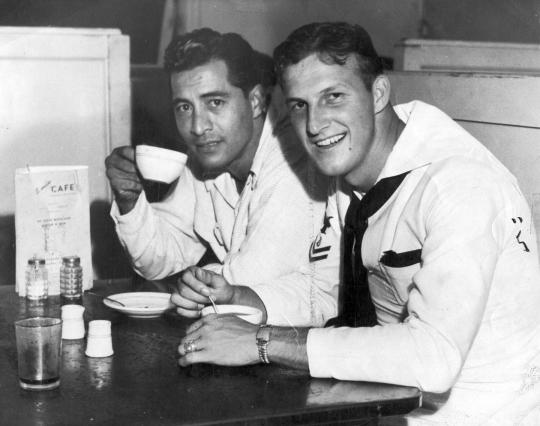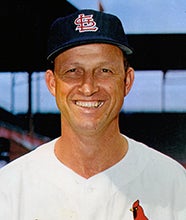- Home
- Our Stories
- Navy jersey tells story of baseball during wartime
Navy jersey tells story of baseball during wartime
It’s just a normal looking baseball uniform, probably around 75 years old, that not surprisingly includes a pair of pants, a jersey and a belt. But it’s the story it tells that makes it special and worth preserving.
The National Baseball Hall of Fame and Museum has about 2,400 uniforms in its collection, but only a half-dozen worn by military baseball team members during World War II. Recently, thanks to a generous donation, another has been added to the list – one that may even have a significant Hall of Famer lineage.
Like thousands did after the United States entered the global conflict, Jerry O’Brien joined the Navy in 1942. After serving with the fleet, he was sent to the Bainbridge (Md.) Naval Training Center, where he, the recently commissioned ensign, was designated baseball coach by Bainbridge athletic officials in March 1944. And according to news reports at the time, the new skipper could expect at least 10 former big leaguers on his roster that season.
Hall of Fame Membership
There is no simpler, and more essential, way to demonstrate your support than to sign on as a Museum Member.
O’Brien, a star high school athlete from Rhode Island whose claim to fame was a no-hit game he pitched for Providence College, was so successful leading the Bainbridge Commodore nine that, according to a wire service story in the Washington Post on July 23, 1944, he “may find himself viewing postwar major league ball from something other than a bleacher seat.”
“The 25-year-old Commodore mentor, who in his first year of big-time coaching has seen his sailor team win 37 games and drop only 11 against some of the best opposition the East could offer, has been approached by three Major League clubs concerning his coaching or managerial prospects when the Navy gets ready to release him.”
A note in the Washington Post said O’Brien’s 1944 team claimed the National Service championship on a record of 57-15, including five wins over major league teams.
O’Brien’s 1945 Commodore squad not only included players with major league experience such as Earl Naylor, Eddie Miksis, Bobby Coombs, Lum Harris, Bob Scheffing, Hugh East, Dick Wakefield, Stan Spence, Jake Wade, Howie Moss, Al Lyons, Benny Culp and Thurman Tucker, but also future Hall of Famer Stan Musial.
The 24-year-old Musial, the St. Louis Cardinals legend coming off a 1944 campaign in which he helped the Redbirds capture the World Series – after batting .347 and winning the National League Most Valuable Player Award the year before – was assigned to Bainbridge in January 1945, where he exchange his civilian clothes for Navy blue.
Musial spent 10 weeks of boot camp at Bainbridge before leaving for a stint in Hawaii. During his limited time on the diamond for the Commodores, it is reported the southpaw slugger hit .344 in eight games, including matchups against the Phillies, Giants and Senators.
In Musial’s 1964 autobiography, “Stan Musial: ‘The Man’s’ Own Story,” written one year after his retirement as a player, he recalled how that limited time with Bainbridge was important to his career.
“At Bainbridge in just a few games, two things happened that were to affect my career,” Musial wrote.
“Although by then I had a reputation as a good defensive outfielder in the big leagues, the Bainbridge athletic officer, a lieutenant named Jerry O’Brien, put me at first base. I was amused. O’Brien was not.
“'Get out of here, Musial,’” he fumed two days later, “'you’re terrible. You’ll never make anybody’s team at first base.’”
“At Bainbridge, too, service personnel wanted to see the home run. So to pull more often, to hit the long ball, I altered my batting stance a bit. I moved up closer to the plate. This proved to be an important step in my evolution as a hitter.”
In March 1946, Musial left the Navy and headed to Spring Training with the Cards. While O’Brien, now a lieutenant junior grade, had recently been had been assigned to the Merchant Marine Academy as baseball coach. Soon after he served as travelling secretary and business manager for the Brooklyn Dodgers of the All-America Football Conference.
O’Brien, who after the war had settled with his wife and children in Rumford, R.I., and became a well-known sports figure in the area due to his radio and television broadcasting work, passed away in 1962 at the age of 44.
Earlier this year, Rick O’Brien, Jerry’s eldest son, donated a Bainbridge Naval Training Center baseball uniform that belonged to his dad to the Hall of Fame. And the O’Brien family believes it may have been the one worn by Musial in 1945.
“We suspected it was of interest to the Hall of Fame and should be preserved,” said Rick O’Brien in an interview when he and eight other family members visited the Hall of Fame in February. “We looked at each and said, ‘What better place to preserve it and keep it intact for people to see and for scholarly research?’ We just wanted to protect it.”
The donated wool uniform’s jersey is cream colored with “Bainbridge” in script lettering across the chest in maroon lettering outlined in yellow; a number 11 on the back also in maroon outlined in yellow. The uniform’s pants are cream colored with maroon piping on the sides of the legs.
“We knew what it was, and we knew that he was involved in baseball, but it was stuff tucked away in a bottom drawer and we never really got a chance to talk to him at length,” said Rick O’Brien, who was 13 when his father passed away. “We were kind of robbed of the opportunity to learn of his experiences during the war. But I think he’d be happy and proud that the uniform was now in the Hall of Fame.”
The uniform is a symbol of the intersection between baseball and American history. And it’s these cultural intersections and the stories they tell that make the Hall of Fame’s collection unique.
“As a curator, these types of donations to the Hall's collection get me unbelievably excited. They are the lifeblood of any museum,” said Hall of Fame Vice President of Exhibitions and Collections Erik Strohl. “When fans visit the Hall, they expect to see artifacts connected to major league games, famous teams and players, and the sport's most unforgettable events. But to me, the items we possess in our collection that have the most meaning are the ones that connect the game to our culture and identity as Americans, displaying baseball's and this country's shared history.
“When I received these items on behalf of the Hall of Fame from the O'Brien family during their visit, they repeatedly told me how honored they were to donate them. But we are just as honored by their generosity and willingness to part with such wonderful family history in an effort to make sure these items are saved for and shared with countless future generations of fans. Baseball is indeed America, which this uniform so wonderfully demonstrates.”
Back in 1997, Rick O’Brien donated other items to the Hall of Fame that belonged to his father during his time at Bainbridge, including a baseball jacket, sliding pads and a number of photos.
“The first time we were here and I said, ‘It was wonderful that we got dad in the Hall of Fame. Even if it was through the backdoor.’ And I was chastised immediately by employees here who said, ‘No, the Hall of Fame is also the Museum and that these artifacts are valuable.’ So they’re clearly revered.
“I genuinely got nervous about having them in my possession. I have grandchildren and they may not revere the artifacts as much as we do. And it does belong here because of that reason. They will be preserved and available. We’re happy to do it and we know it’s the right place for it to be.”
Bill Francis is the senior research and writing specialist at the National Baseball Hall of Fame and Museum
Related Stories
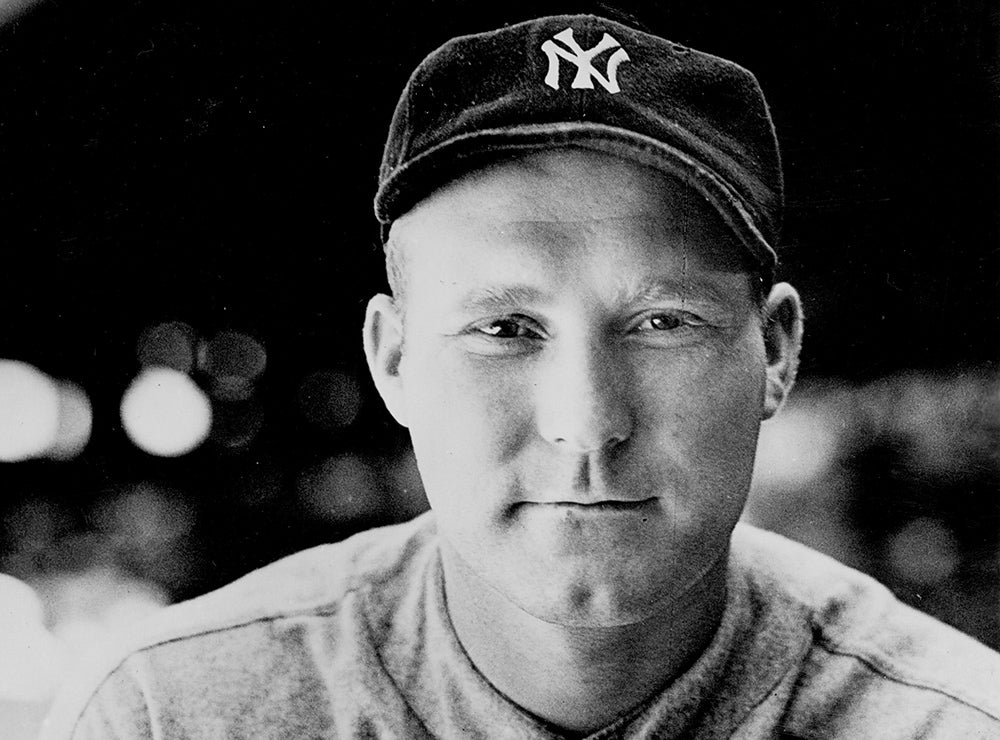
After 19 years in the big leagues, Ruffing called up for military service
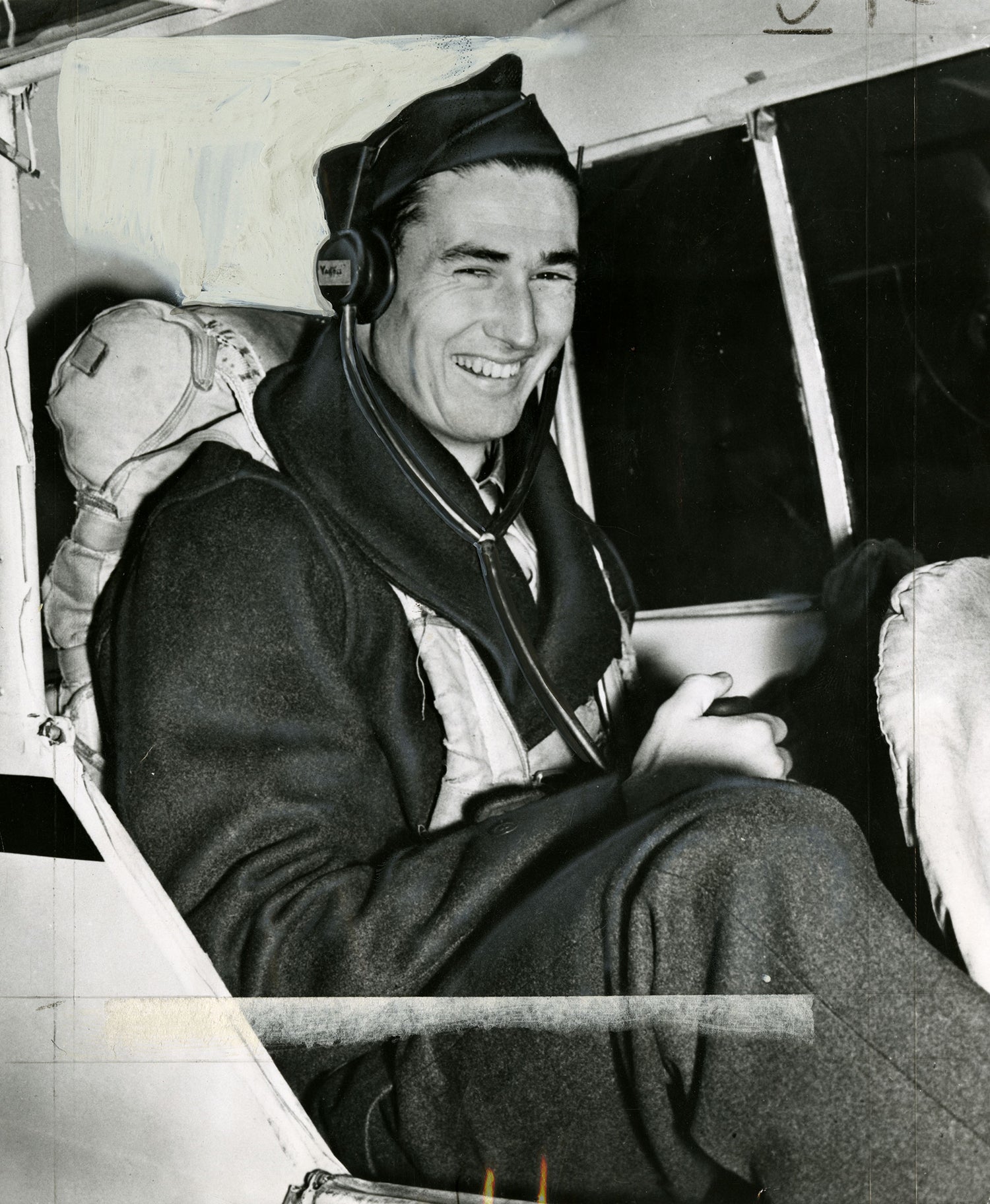
#GoingDeep: Ted Williams Heads Back to War
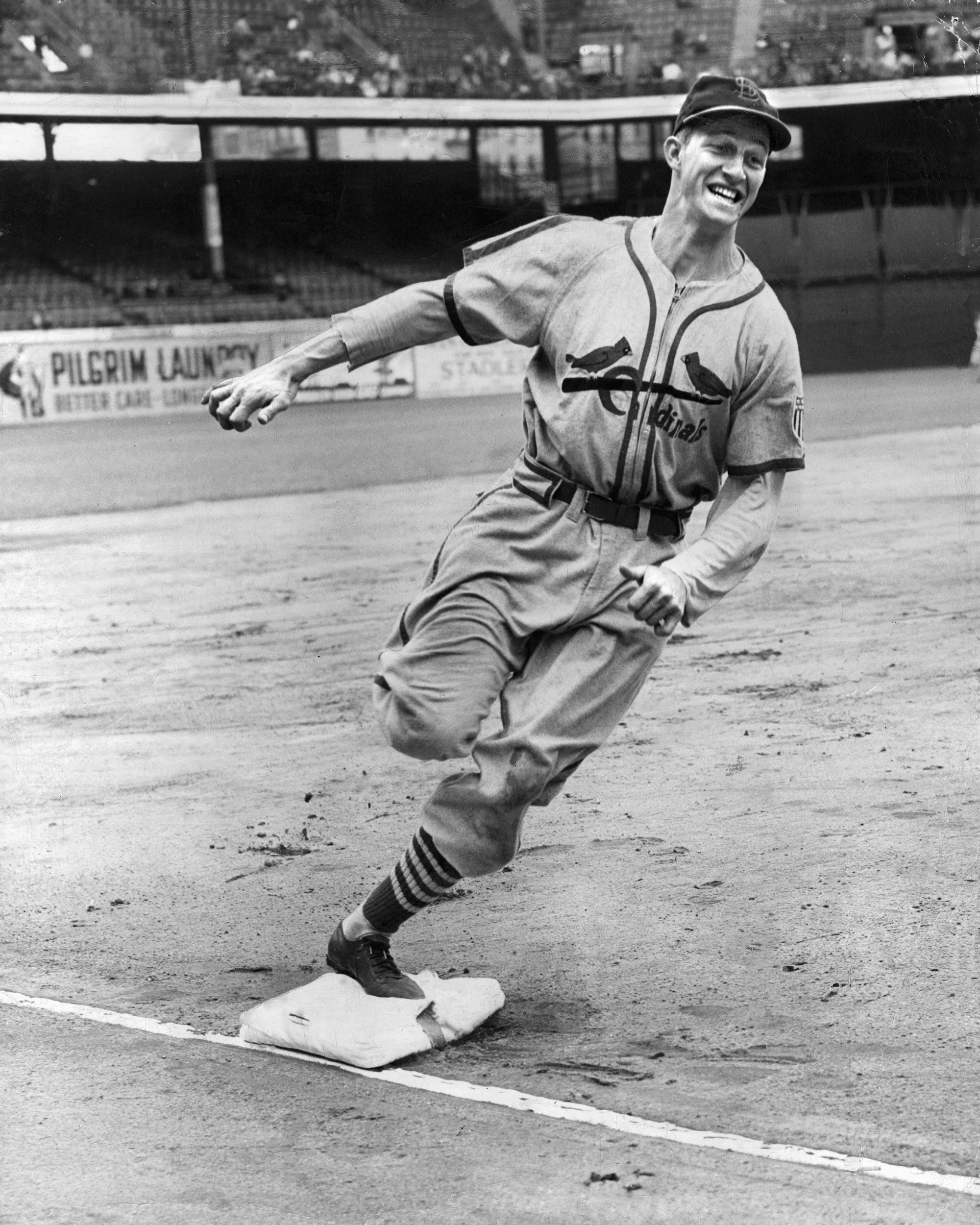
Consistency was Musial’s hallmark during legendary career

Musial passes Speaker on all-time hits list

After 19 years in the big leagues, Ruffing called up for military service

#GoingDeep: Ted Williams Heads Back to War

Consistency was Musial’s hallmark during legendary career


